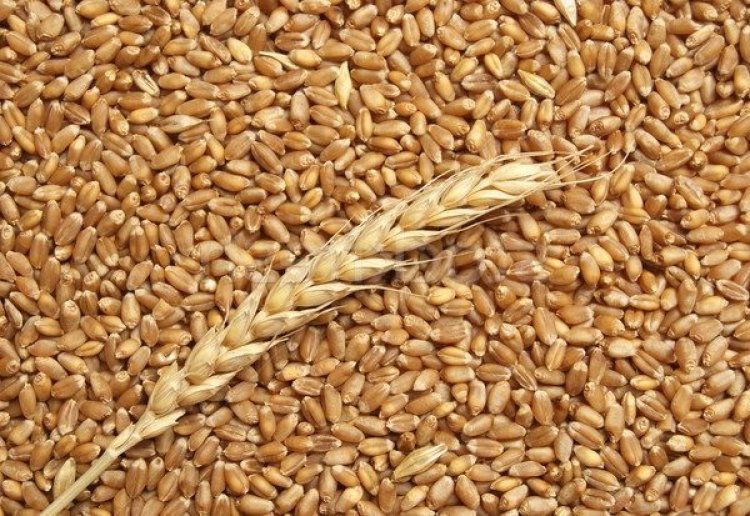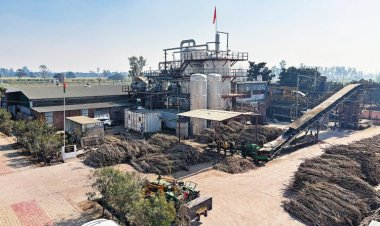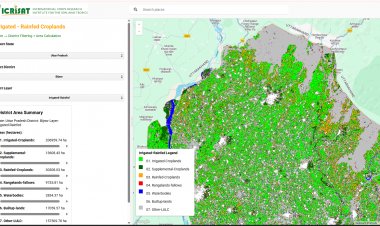Why import of wheat may become inevitable in a year of 'record production'
The central government has estimated a record production of 112 million tonnes of wheat in the Rabi season (2023-24). Despite this, a situation of wheat import may arise in the country this year. The reason for this is that the government procurement of wheat has been limited to only around 262 lakh tonnes procured last year, while the stock of wheat in the central pool on April 1, 2024 has been at the lowest level since 2008 at 75.02 lakh tonnes

The central government has estimated a record production of 112 million tonnes of wheat in the Rabi season (2023-24). Despite this, a situation of wheat import may arise in the country this year. The reason for this is that the government procurement of wheat has been limited to only around 262 lakh tonnes procured last year, while the stock of wheat in the central pool on April 1, 2024 has been at the lowest level since 2008 at 75.02 lakh tonnes. To control prices, in 2023-24, the government had launched 100 lakh tonnes of wheat in the open market through the Open Market Sale Scheme (OMSS). But considering the situation of wheat procurement this year, the government will not be in a position to sell such a large quantity of wheat in the open market.
This is the reason why this year the government has reduced the quantity of wheat required for the National Food Security Act (NFSA) and other schemes. Even after this, the government will not have the same quantity as last year to control wheat prices. At the same time, wheat prices are continuing to rise and in such a situation, there may be pressure on the government to import duty free wheat after the Lok Sabha elections.
In view of the government procurement situation, flour mills are demanding duty free import of wheat from the government. But due to Lok Sabha elections, the government does not want to take any political risk by opening the way for duty free wheat import. But after the elections, the new government may have to take a decision regarding wheat import.
The Food Ministry has allocated 184.10 lakh tonnes of wheat out of a total of 590 lakh tonnes of food grains in the current year (2024-25) for PDS and other government schemes. Whereas 411 lakh tonnes of rice has been allocated and 1.6 lakh tonnes of Shree Anna has been kept under it. There is a provision of 74.6 lakh tonnes of wheat in the central pool under the buffer standard for April 1, whereas on April 1, 2024, there was 75.02 lakh tonnes of wheat in the central pool, which is the lowest level in the last 16 years. In April 2008, the wheat stock in the central pool stood at 58.03 lakh tonnes.
In such a situation, even if the government procurement of wheat reaches 265 lakh tonnes in the current Rabi marketing season (2024-25), even then the government will have about 340 lakh tonnes of wheat available in the current year. In this, 74.60 lakh tonnes should be under buffer standard by April 1, 2025. So the government will have only about 80 lakh tonnes of wheat available to control the prices in the market.
Despite all efforts to control food inflation, according to the latest data, the food inflation rate has been 8.63 percent. At the same time, wheat prices in the world market have increased by more than $ 25 per ton in the last few days. The price of cheapest Russian wheat was 199 dollars per tonne in March, which has now increased to 225 dollars per tonne. If shipping and other expenses are added to this, this price would have reached $275, which at the current rate of dollar and rupee makes the import cost of wheat more than Rs 22800 per tonne. This price is marginally higher than the Rs 2275 per quintal of wheat MSP fixed by the government for the current season. Whereas 40 percent import duty is applicable on wheat. The price of wheat from European Union countries is running at $260 per ton and the price of American wheat is at $290 per ton. In such a situation, wheat import is not economically viable at present.
Government procurement of wheat this year has been much less than expected. Due to which questions are being raised on the estimates of wheat production. According to government data, till May 22, a total of 261.28 lakh tonnes of wheat was purchased in the country. Of this, maximum purchase of 123.86 lakh tonnes has happened in Punjab. 71.06 lakh tonnes of wheat was purchased in Haryana and 47.69 lakh tonnes of wheat was purchased in Madhya Pradesh. The wheat procurement figure in Uttar Pradesh has reached 8.92 lakh tonnes while 9.60 lakh tonnes of wheat has been purchased from Rajasthan. The government expected that in view of the better crop this year, the government procurement of wheat could be between 310 to 330 lakh tonnes.
This year's low procurement in Madhya Pradesh, which had left Punjab behind in wheat procurement four years ago, has become a puzzle. The reasons behind this are believed to be the adverse weather conditions on the wheat crop and farmers not selling wheat in the hope of increase in prices. This year, the Madhya Pradesh government has given a bonus of Rs 125 to the farmers in addition to the MSP of wheat, due to which the government procurement price became Rs 2400 per quintal. Despite this, low wheat procurement is a clear indication of decline in production there. In Rajasthan too, farmers have got a price of Rs 2400 per quintal with the bonus from the state government. This has led to an increase in wheat procurement in Rajasthan.



 Join the RuralVoice whatsapp group
Join the RuralVoice whatsapp group








































